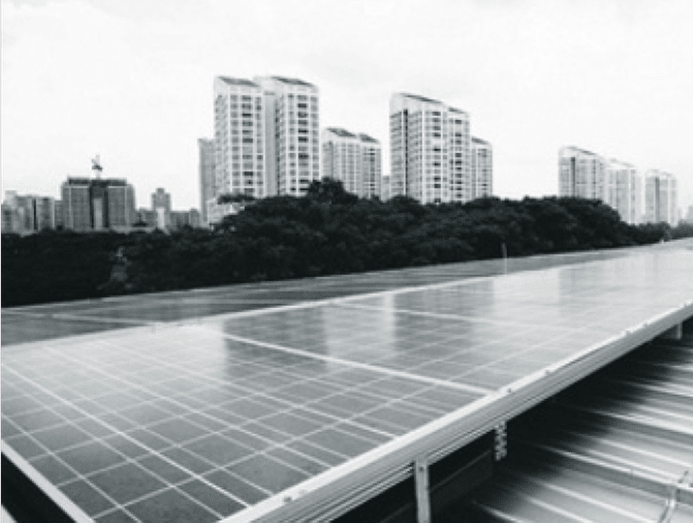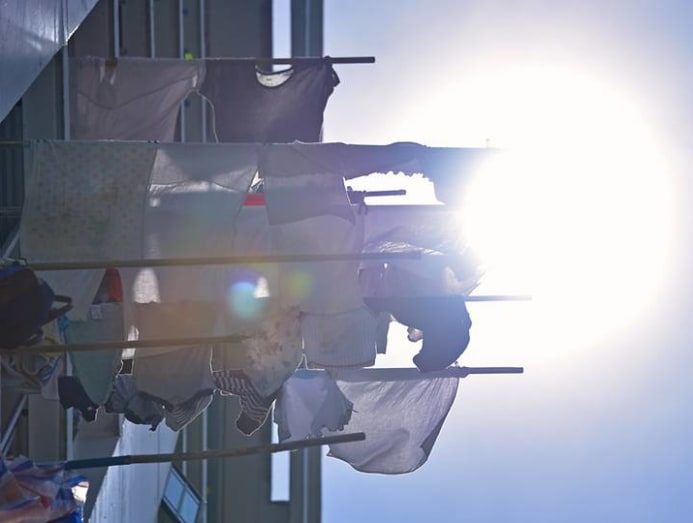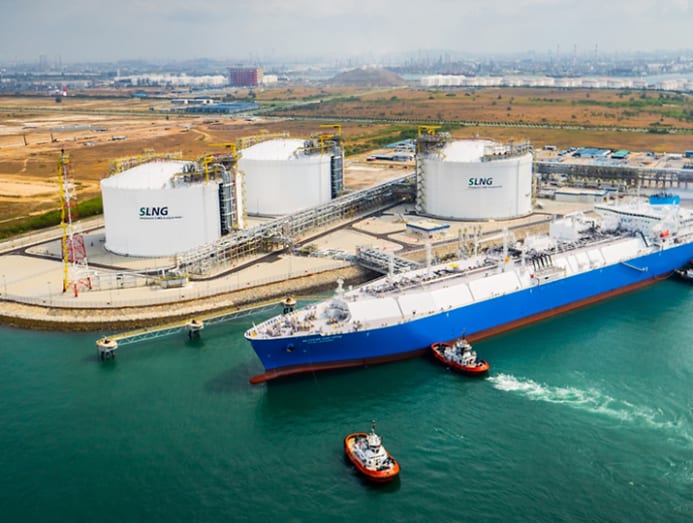Commentary: Why hasn’t solar energy in Singapore taken off in a big way after so long?
SINGAPORE: In 2016, the Government issued its Climate Activeness Plan which included a commitment to reduce the intensity of greenhouse gas emissions by 36 per cent from 2005 levels by 2030, and for these emissions to reach a tiptop at around 2030.
Early on last year, it made a further delivery, aiming to halve the level of top emissions by 2050 and achieve net-zero emissions "as soon as feasible in the second half of the century".
Among other measures, this will crave the land to reduce its dependence on fossil fuels, notably in the production of electricity where more than 95 per cent is produced past natural gas.
Singapore's options for domestically generated low-carbon electricity are relatively limited.
READ: Commentary: Singapore's dreams of becoming a solar-powered nation take nigh arrived
At that place is insufficient wind for wind power, the rocks below united states are not hot enough for commercially viable geothermal energy.
Tidal and moving ridge energy have theoretical potential only Singapore'south maritime space is as well busy with shipping, and nuclear energy is considered as well risky for Singapore even with today's applied science
Therefore, solar energy is the near feasible option and solar photovoltaics is the current prevailing technology. This why the Minister for Merchandise and Industry Chan Chun Sing in Oct 2022 identified solar energy every bit one of the "Iv Energy Switches".
Solar energy also improves the country'southward security of energy supply as it is produced within Singapore. In contrast, all natural gas is imported.
Listen to Philip Andrews-Speed too tackle how Singapore's import of electricity from Malaysia will work and its implications on CNA's The Climate Conversation:
SOLAR IS PICKING Up, BUT SINGAPORE'Due south AMBITIONS REMAIN MODEST
Solar photovoltaic panels (or modules) consist of a number of cells composed of semiconducting materials that catechumen sunlight into electricity through what is known as the photovoltaic effect.
Although the mass product of photovoltaic cells dates back 40 years, the extensive deployment of solar photovoltaic panels around the earth simply really started to pick up from nearly 2010.
Since so the global installed capacity has risen 17-fold. I of the reasons for this contempo surge of capacity is that the cost of photovoltaic panels has declined to about one-tenth of what it was in 2010.
Singapore's deployment of solar photovoltaic panels at significant calibration started in about 2009 and accelerated from 2015.
READ: Explainer: The impact of ability on our environment
By September 2020, the total installed capacity was 400 MWp (MWp is the power output of a solar power system which would be accomplished under ideal weather).
But this is notwithstanding only a tiny fraction of the country's full power generating capacity of 12,600 MW. Furthermore, solar power is variable unless accompanied past energy storage and so information technology contributed merely about 0.55 per cent of the country'south full electricity supply in late 2020.
The current objective is to boost the installed capacity of solar photovoltaics to two,000 MWp by 2030. This would provide the equivalent of iv per cent of Singapore's electricity at today's level of need.

But, of class, the country's need for electricity is likely to keep growing, not to the lowest degree as nosotros electrify road send.
This leads to the question of why these ambitions are so modest.
THE PROBLEM WITH Cloud Embrace
The constraints to Singapore's power to host a substantial solar photovoltaic chapters arise primarily from the express availability of two natural resources virtually which we can exercise little: Sunlight and space.
READ: Commentary: Importing electricity from Malaysia is a practiced thing
On top of these are a number of technological issues that tin exist progressively addressed.
Although Singapore's climate is relatively hot and the weather condition is unremarkably sunny, the average intensity of solar radiation across a total twelvemonth is not very loftier. Certainly information technology is l per cent higher than that in northern Europe where solar photovoltaic plays a pregnant function, notably in Germany.
However, it is significantly less than that in northern China, and xxx to xl per cent less than in the deserts of N Africa, the Middle East and Commonwealth of australia where vast solar photovoltaic arrays are being synthetic.
Singapore's trouble is cloud cover and humidity, as it is across much of Southeast Asia. In addition, the consistently high temperatures reduce the efficiency of photovoltaic cells.

SINGAPORE DOESN'T HAVE ENOUGH Infinite
Infinite is the 2d key constraint. Singapore lacks vast open spaces in which to build large solar arrays. Much of the country hither is occupied by buildings, roads and protected green spaces.
Today about ane tertiary of the country'southward solar free energy capacity sits on the rooves of residential buildings, while most of the residuum is on public space developed by town councils and grass root units. Industrial buildings account for only just over x per cent of this capacity.
Last twelvemonth saw the publication of an updated roadmap for solar photovoltaic energy produced past a consortium led by the Solar Energy Research Institute of Singapore (SERIS).
This detailed analysis concluded that the total usable space for solar photovoltaic panels amounted to just under 37 sq km.

Of this, 62 per cent would be on buildings, both roof infinite and facades. The balance would be shared betwixt temporary land-based installations (temporary because the land is zoned for other uses), floating installations on reservoirs and unused nigh-shore sea areas, and panels installed above state, canals and roads.
Costs will vary between the options, and none are cheap compared to installing arrays on big tracts of unused, open up country. This is an important consideration given that Singapore runs a competitive electricity marketplace. However, as the national price of carbon rises, the commercial viability of these options will amend.
TECHNICAL CONSTRAINTS
The iii technical constraints relate to cell efficiency, energy storage and grid integration. The efficiency of commercially bachelor photovoltaic cells currently lies in the range 15 to 21 per cent.
What is also important is that some of the more efficient technologies lose less efficiency every bit temperatures rising. Looking to the time to come, nosotros should look new jail cell designs to accept higher efficiency.
Every bit the total capacity of solar photovoltaics grows, free energy storage becomes important. This is because solar energy varies during the 24-hour interval as well every bit from day-to-24-hour interval.
Although demand for electricity in Singapore is loftier from 9am to 5pm when the sun is at its highest, there is as well a lower meridian of need in the evening when people return home from piece of work and turn on their air conditioners and other electrical devices.
READ: Commentary: Air-conditioning – the unspoken energy guzzler in Singapore
Batteries and other forms of energy storage will be increasingly needed equally the country'due south utilize of solar free energy rises to provide electricity in the evenings.
Free energy storage will too aid with integrating the solar power into the electricity grid. The variability of solar energy, from minute-to-minute as well as from hour-to-hour, tin pose challenges to maintaining grid stability as the amount of solar power generated rises.
This should non be a trouble in Singapore due to flexibility of the gas-fired power stations, especially if they are backed up past energy storage systems,

LIFESPAN OF SOLAR PANELS, Effects OF CLIMATE CHANGE Key UNCERTAINTIES
Looking to the longer term, two other bug are relevant. Starting time, the life span of solar panels is generally twenty-25 years, if well maintained.
This compares to 40 years for a gas-fired power station. The panels will then need to be replaced and the materials recycled.
Less easy to manage will be possible effects of climate change. Temperatures in Singapore may continue rising which will lower the efficiency of the cells, cloud cover and humidity may increase, and the frequency of powerful storms may escalate.
In summary, there are severe limits to Singapore'south power to generate pregnant quantities of electricity from renewable sources, and this will not come without a toll.
READ: In The New Map, writer Daniel Yergin takes on energy, climate change and the slow but certain shifts in large power relationships
Withal, the Authorities is determined to make this effort. However, if the state wants renewable energy to supply a substantial share of its electricity, then this volition accept to be imported either from mainland Southeast Asia or from Australia.
This takes us back to the announcement in October 2022 by Mr Chan that Singapore would import electricity from Malaysia, starting with a 2-year trial.
While this is a dainty offset, access to substantial quantities of renewable free energy will require cartoon in hydroelectricity from Laos. Plans too exist to build a cablevision to bring solar energy from Commonwealth of australia to Singapore.
Every bit a result, Singapore will get increasingly dependent on imported renewable energy rather than natural gas for its electricity supply, though gas is likely to remain important for any years.
Philip Andrews-Speed is Senior Principal Boyfriend at the Energy Studies Constitute, National University of Singapore.
Source: https://cnalifestyle.channelnewsasia.com/commentary/commentary-why-hasnt-solar-energy-singapore-taken-big-way-after-so-long-294591
0 Response to "Commentary: Why hasn’t solar energy in Singapore taken off in a big way after so long?"
Post a Comment